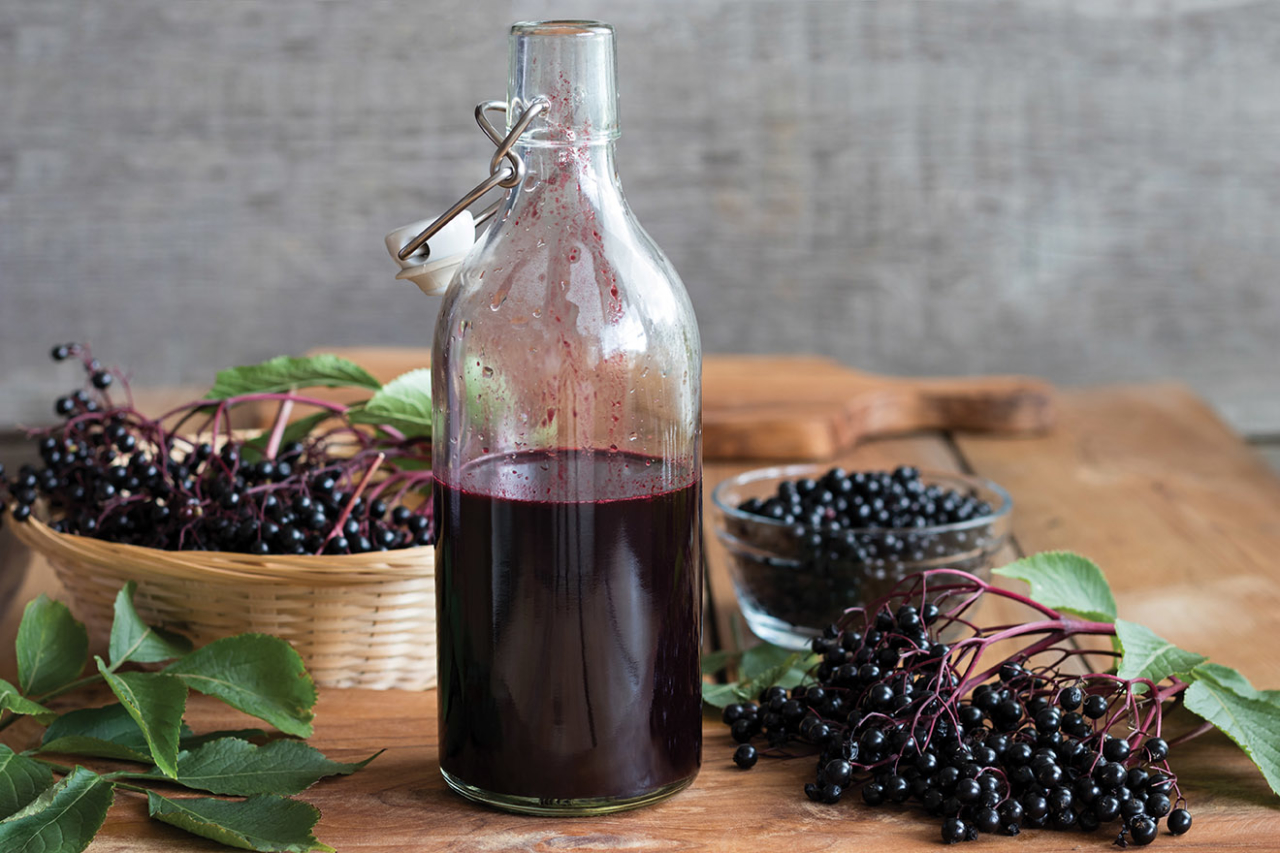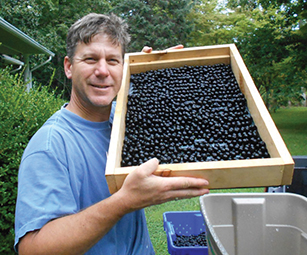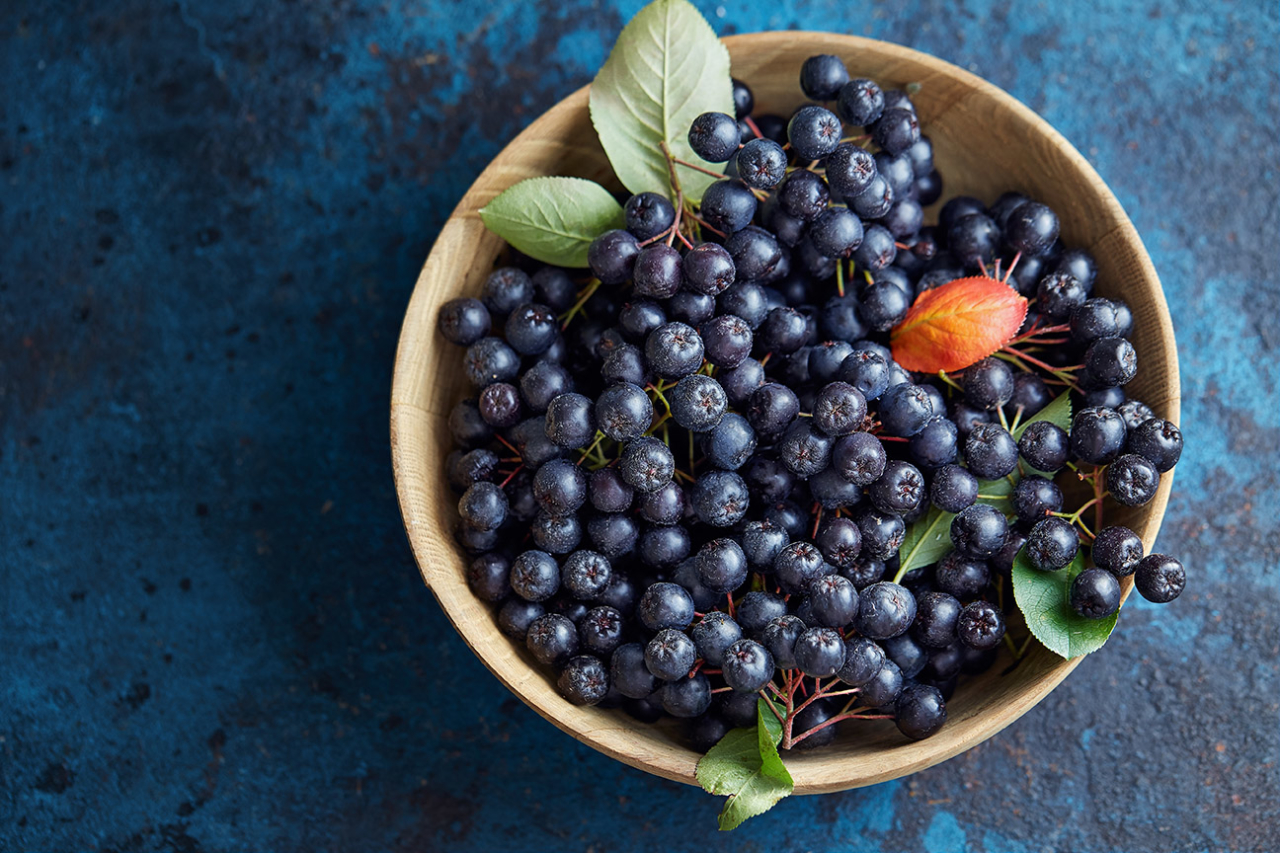It’s planting season for Aronia berries, and with the growing list of health and wellness benefits, this super-berry will one day soon get the attention it has deserved
Written by Denise Sultenfuss
A few years back, I visited one of my daughters, who lives in the rural Midwest. One afternoon, I volunteered to do the grocery shopping, so I scuttled off to the local supermarket. Pushing my cart through the produce section, bereft of organic options, I stumbled upon bottles of high-priced Aronia juice, positioned like elite players waiting for selection by a collegiate coach. Signs in neon cardstock, with “local” written in black Sharpie, announced the availability of the deep- purple juice.
Aronia berry often takes backstage to the more popular elderberry. Maybe Aronia berry’s (Aronia melanocarpa) more common name, chokeberry, prevents the North American shrub from elevating to health-food-celebrity status. But it’s just a matter of time before this super-berry gets the attention it deserves. Interestingly, the antioxidant capacity of Aronia berry exceeds that of elderberry. So, this year may be the year to make Aronia berry a part of your health-wellness protocol.


WHAT’S IN A NAME?
More commonly known as chokeberries, for their tart taste, Aronia berries can be blended into delicious smoothies or baked into cookies, pies, muffins and breads.
Aronia Berry Superpowers
Over the years, I adorned my backyard with various varieties of edible delights. Aronia performs well in my area. You could try your hand at growing a few Aronia shrubs. Before investing in plants, check if they thrive in your growing zone.
It’s been about seven years that I’ve managed my hedge of lush Aronia foliage. Harvesting the fruit begins in late August to September. During harvest, buckets brim with berries. I suspect, however, that if supermarkets stocked pints of fresh, astringent Aronia, I am sure that the thin-skinned fruit would land on the Environmental Working Group’s Dirty Dozen list.
As a farmer, I know my Aronia shrubs are ready for harvesting when the branches bend with clusters of dark-velvet berries. But, as a health-and-wellness coach, I wanted to dig deeper into Aronia’s medicinal and nutritive properties.
Before losing my nerve, I contacted Dr. Andrew Ristvey, extension specialist for Commercial Horticulture. We met for an interview in which he explained that “the color of the Aronia berry is a tell-tale sign of high concentrations of flavonoids, including phenolic compounds.”
Dr. Ristvey mentioned that plant phenolics provide antioxidant benefits. For example, fresh Aronia berries have the highest antioxidant capacity among berries and other fruits. Therefore, eating plants rich in antioxidant fruits and vegetables reduces the risk of many oxidative stress-related diseases like cancer, heart diseases and diabetes. For example, recent studies show that chokeberries inhibit the growth of colon cancer.
Vegetables and fruits like Aronia also contain anti-inflammatory qualities, an added benefit.
Ways to Use Aronia Berry
These days, it’s pretty common to find bottled Aronia juice in supermarkets throughout the U.S. and Canada. My only caution is to pay attention to the sugar used to sweeten the juice. After all, you want to distance yourself from refined sugar, so note the amount of added sugar. In addition, industrially made Aronia juice is often expensive, so stock up when you see it discounted. Finally, because of Aronia’s powerful medicinal qualities, try to consume it in as many forms as possible.
Syrup, Tonics and Teas
Syrup, tonics and teas are easy to make and store. Herbalist and author of Making Plant Medicine, Rich Cech, recommends making syrups and decoctions for bitter herbs when using the roots, berries, barks or herbs seeds. But again, the trickiest part of making syrups, tonics or teas is choosing the healthiest sweetener. Word of caution: Choose the sweetener with the maximum health benefits.
My favorite sweeteners for syrups and tonics are raw honey and date syrup. Dates provide potassium, calcium and magnesium. In addition, because of their high fiber content, dates are a healthier sweetener on the glycemic index.

Juice, Jams/Jellies and Wine
As you search for jam and jelly recipes, collect only those recipes using plant-based sweeteners.
Aronia Berries in Smoothies/Smoothie Bowls
Wellness-boosting ingredients, like fruits and vegetables, are the essential ingredients in a smoothie. Adding Aronia berries to your blend increases the nutritional value.
Nutritionally, the best way to use smoothies in your eating plan is to view them as a supplement, not as a replacement for real food. However, if you need to skip breakfast or a quick snack, smoothies serve as an excellent fallback.
Add a handful of fresh or frozen Aronia berries to any smoothie recipe.
Let Aronia berry occupy shelf space in your refrigerator and medicine cabinet this year. Then, toss the fruit in your smoothie, smoothie bowl, muffins and granola recipes.
Aronia Berry Healing Syrup Recipe
Inspired by Farmhouse Teas
Prep Time: 25 min
Cook Time: 45 min
Total Time: 70 min
Ingredients:
1 cup Aronia berries, dried or fresh
6 cups of water, filtered
⅛ cup astragalus root, cut and sifted
⅛ cup echinacea root, cut and sifted
½ cup orange peel, dried
½ cup rose hips, dried
10 cloves
1 Tbsp cinnamon bark chips1 Tbsp ginger root, dried
½ cup raw apple cider vinegar
1 cup raw, local honey
½ cup elderberries, dried or fresh (optional)
Instructions:
Bring filtered water, Aronia berries, dried herbs and elderberries to a boil in a medium saucepan on the stove. Once the herbs and berries are boiling, cover with a lid, then reduce to a simmer.
Simmer the herbs and berries for about 30 minutes or until the liquid is reduced by half.
Strain the berries and herbs from the mixture using a fine-metal sieve or an unbleached cheesecloth, carefully removing all of the juices. A metal potato masher, wooden spoon or silicone spatula can help remove them without the mess of the juice and getting burned from the heat of the herbs.
Pro Tip: If you have a French press, it works well in place of a sieve to get all the juices removed from your decoction.
Once strained, dispose of the pulp in your compost pile and let the Aronia berry juice cool to room temperature. It is essential to allow the liquid to cool. Otherwise, the heat will kill the beneficial enzymes and nutrients in the raw honey and apple cider vinegar.
Add raw apple cider vinegar and local raw honey after the juice has cooled to the touch and is no longer hot. Whisk well or use an immersion stick blender to incorporate the honey and vinegar well.
Pour into a quart-size Mason jar and store in the refrigerator. You can store it safely for up to two weeks. This recipe can be doubled or cut in half to accommodate your needs.
Supplement one tablespoon daily for adults. When fighting a cold or flu, increase to one tablespoon every two hours until symptoms subside. CS
Editor’s note: Denise Sultenfuss is a certified health-and-wellness coach, writer and owner of Soulful No-FUSS Healthy Living. She lives on her family farm in Centreville, MD, where her family implements sustainable farming practices in raising beef cows, crops and maintaining conservation projects. Visit her website at DeniseSultenfuss.com.

